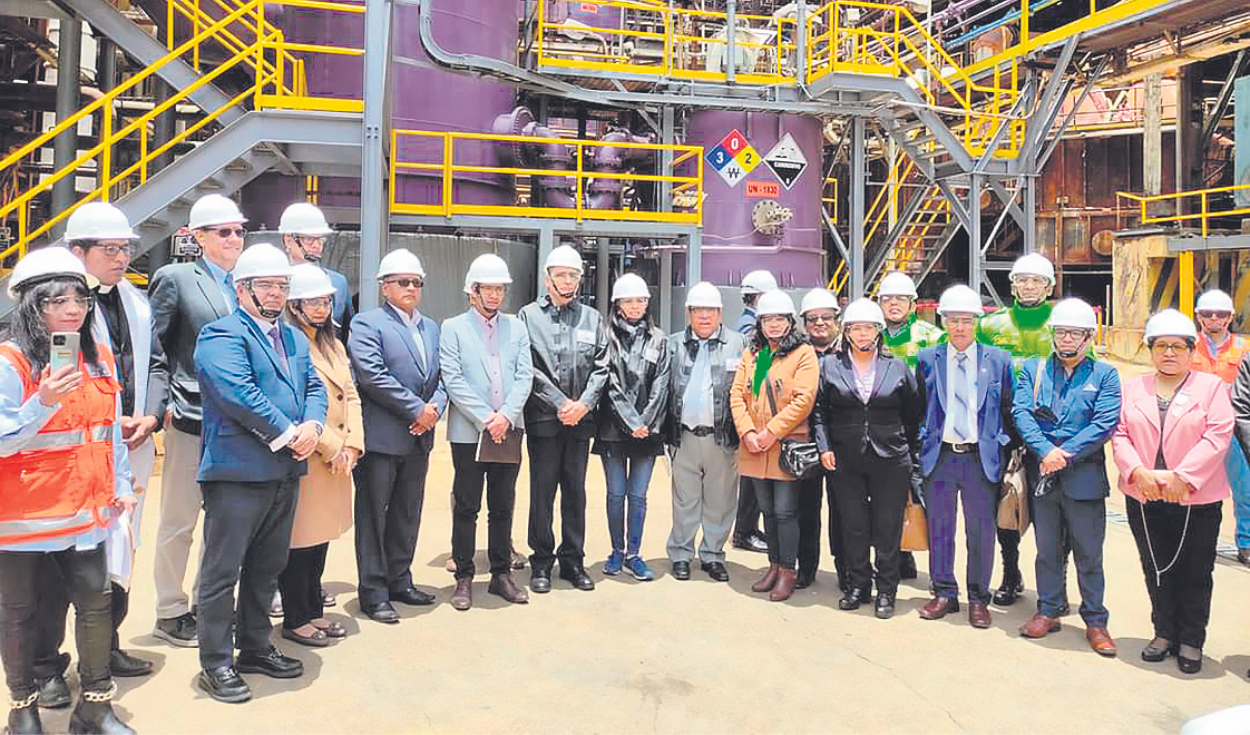
In 2009, Doe Run Perú stopped its operations at the Metallurgical Complex of La Oroya (CMLO), claiming that they did not have the resources to keep it afloat. A lot of water ran under the bridge and only in October of last year was the infrastructure handed over to its former workers, organized through Metalurgia Business Perú SAA (MBP).
At the closing of this note, the CMLO finished receiving the environmental permits to begin the production stage, since the National Water Authority (ANA) approved the permits for the discharge of treated waste, industrial and domestic waters to be carried out in the rivers. Mantaro and Yauri. The ANA will carry out the control of discharges in order to enforce the Water Resources Law.
“All licenses were obtained. It’s all in the legal aspect. Let’s take care of the environment, we will take care of the rights of workers and sincere and unified work with nearby communities. “Those are our pillars,” commented Luis Castillo, president of the Board of Directors of Metalurgia Business Perú, for La República.
Impact of the CMLO in the central mountains
Castillo assured that they will produce between 290 and 300 tons of zinc daily for five years, as part of an agreement with a local company, which will provide them with concentrates for the Andean complex to refine.
The slogan of MBP It is not only to reactivate its flagship minerals, such as lead, zinc and copper, but also to give added value to the plant and add projects to produce lime and fertilizers, which will translate into greater opportunities for growth and economic reactivation for La Oroya and the region. Junin.
The CMLO was purchased by its former workers for US$20 million—in the last auction of Doe Run—and, currently, its valuation is US$160 million—according to Castillo. For the first two years they expect to move US$300 to US$400 million annually, and as the production of other metals enters the equation, this figure will rise.
“Unfortunately, (the CMLO) should not have stopped.” We have gone back 100 years”he added. His words coincide with those of the Vice Minister of Mines, Jaime Chávez-Riva, who assured that the only solution was for the project to pass into the hands of his workers.
“Let this restart be a sign that great business can also be done from below (…) let this be a factor of progress for La Oroya and the entire community.” central mountain range and a significant grain of sand in the resurgence of the economy in our country,” said the vice minister. Chavez-Riva a week ago, when actions at the CMLO resumed.
Regarding lead production, they will wait approximately two months to pass, the time it will take to repair the infrastructure, as well as for silver.
And, for copper, Castillo acknowledges that it will take longer to materialize because “the work space left by Doe Run is practically destroyed.” In addition, for copper production they require a new investment plan and a Corrective Environmental Management Instrument – IGAC. They do not rule out seeking a private partner to float this project.
Regularization advances in La Oroya
As part of the liquidation of Doe Run Perú’s assets, the firm delivered – between 2014 and 2015 – homes to its former employees as dación en pago. The legal status of these properties was not clarified.so the liquidator Consultores A1 registered 1,045 homes in La Oroya in the public records.
For those owners who still doubt, they invited them to contact them so that their legal team can carry out the procedures and thus give relief to these families. “They are being influenced by neighborhood leaders who want the process that we direct,” noted Héctor Iriarte, general manager of Consultores A1.
The word
Luis Castillo, pdte. Metallurgy Business Peru
“All licenses were obtained. We are going to take care of the environment, the rights of workers and sincere work with nearby communities. “Those are our pillars.”
Figures
- Former employees paid 20 million dollars for the CMLO.
- The complex will produce 300 tons of zinc daily.
Source: Larepublica
Alia is a professional author and journalist, working at 247 news agency. She writes on various topics from economy news to general interest pieces, providing readers with relevant and informative content. With years of experience, she brings a unique perspective and in-depth analysis to her work.












